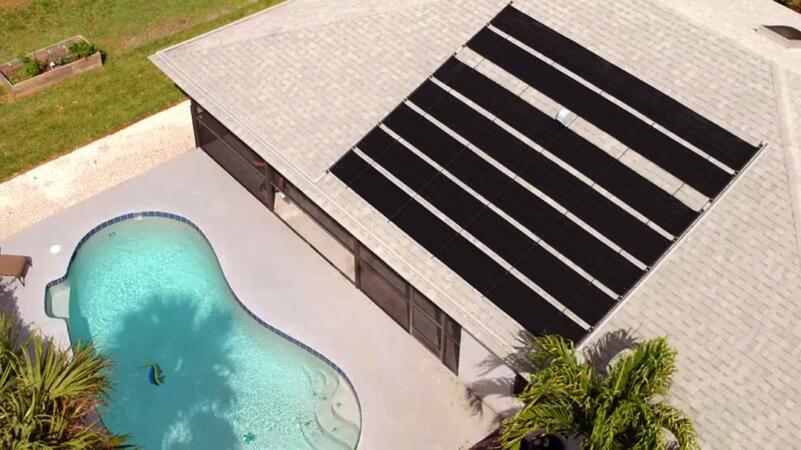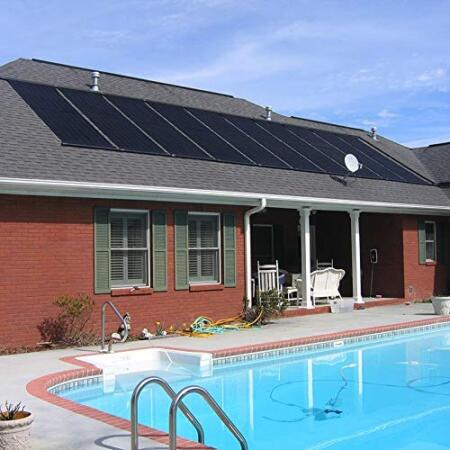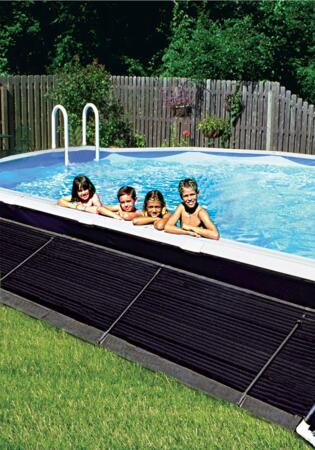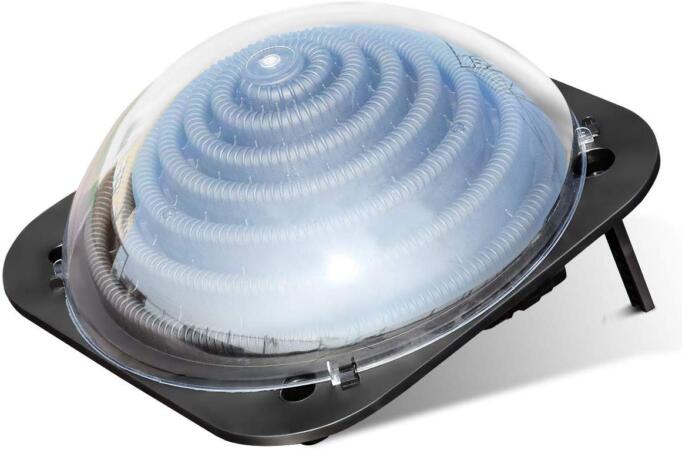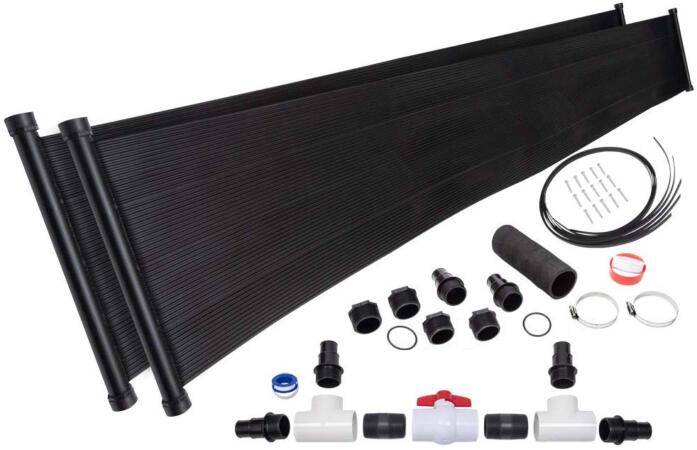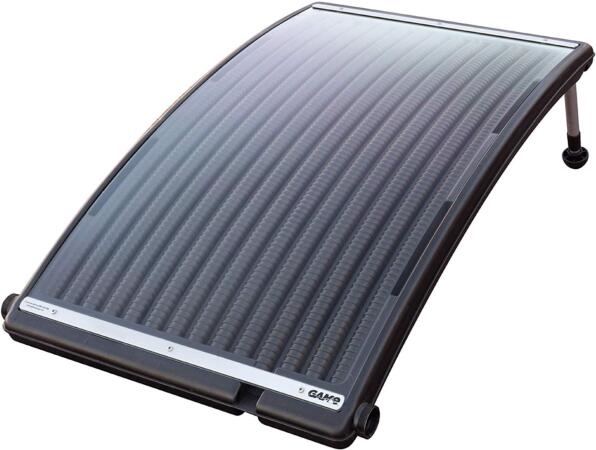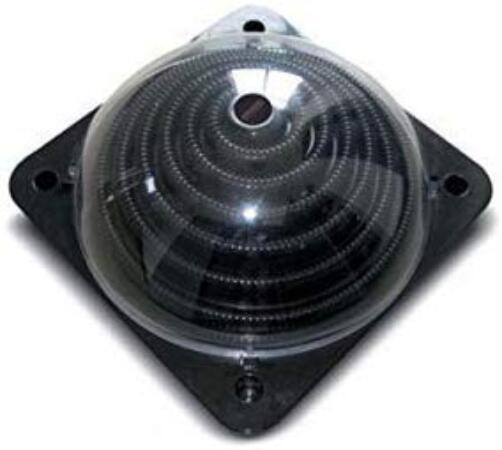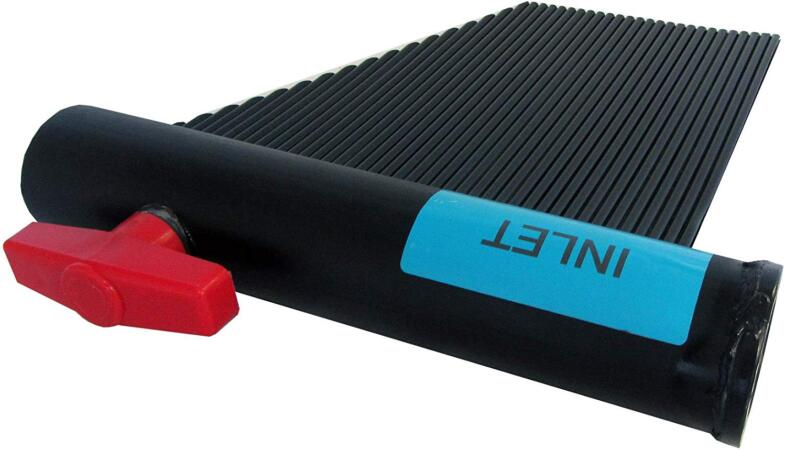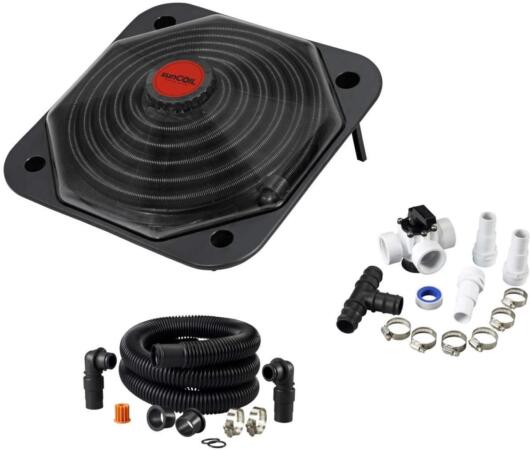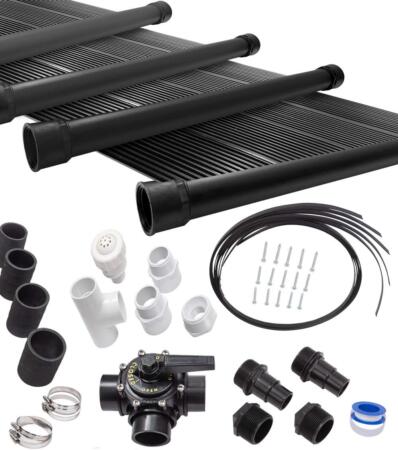Choosing the optimal heating equipment for a home pool involves sizing the capacity of the system according to the size of the pool and according to its shape and depth (in general the relevant parameter is the volume of water to be heated). Also the climatic conditions such as average temperature, solar irradiance, and wind speeds play an important role.
All these factors are needed to determine which type of solar heater will be more effective to achieve the desired effect without oversizing the purchase and increasing the required budget over necessary.
Therefore, to make it easier for buyers to determine the best solar heater option, the most important factors to consider in the selection process are presented below:
Collector Type
Basically there are two types of design of heat collectors for swimming pools, that although they have the same principle of operation, they differ in size, capacity and installation. Now, both types are described.
- Panel Collector: This collector has a flat and extended structure that can be placed on a surface (ceiling, platform, floor, etc.). It takes more space than other types of collectors but has a greater heat transfer capacity that allows it to increase the temperature faster and a higher. Its main disadvantage is the size it occupies, the skills necessary for its installation (in cases requiring an expert to do so), and its portability.
- Spiral Collector or Coil: This type of collector consists of a spiral heat transfer hose enclosed in a transparent cover that helps to accumulate solar heat (greenhouse effect) and minimize the counterproductive effect of wind (due the convection effect).
In general, the rate of heat transfer is smaller since the surface exposed to the solar radiation is lower, making its efficiency inferior to the panels. Nevertheless, the installation process much easier, is highly portable, occupies less space and does not affect the aesthetics of the garden. Some heaters have telescopic legs, which are adjustable to different sizes to tilt and guide them in the best way to take advantage of the sun’s rays.
Sizing
Depending on the type of solar heating system, the sizing can be done as follows:
- For Panel Type Collectors: The sizing can be done through websites such as Hotspot Energy where physical and geographical data can be entered. Some parameters that you will need are the size and shape of the pool, the area, the orientation and inclination of the roof or installation site, and an estimated percentage of shade.
Using these parameters, the area of the necessary collector is obtained, this determines the number of panels that must be connected in series to obtain the desired effect.
Another simpler way to calculate the amount of panels that a specific manufacturer would need (only for rectangular pools) is through the following formula:

Where “X” is the number of solar panels and “Fd”is a derating factor related to the percentage of square footage in relation between the pool and the panel (minimum 50%, ideally 65%).
- For Coil Type Collectors: The sizing cannot be carried out by means of web calculators or formulas but by the manufacturer’s recommendations that are generally tabulated in the product guide.
Depending on the size and shape of the pool, the guide will provide the suggested amount of collectors needed to achieve the optimum heating level. An example of such a recommendation for the Kokido Keops Solar Dome product is presented in the following table.

Figure 2. Pool sizing table for Kobido Keops. Source: Wish
Installation
Installation can prove to be a hassle. If the process of setting up the solar heater is not easy, you would probably require an expert to help you, which is usually quite expensive and represents an additional cost.
There are, however, many above-ground pool heaters which are quite simple and easy to install. Thus, this is an important factor to consider when you are out there shopping for the best heater.
If the priority is an easy installation, then it is best to choose a spiral, compact and portable type heater so as not to have additional problems with this issue, nor with additional materials or special tools.
Warranty
If you are spending a lot of money on buying a solar-powered heater, you must also consider what kind of warranty it is offering. Some of the products reviewed, offer limited guarantees between 1 and 10 years on manufacturing defects with discounts from the first year of use for defects in materials or operation.
Conclusions
As evidenced by solar pool heaters, they are an innovative technology that increasingly brings more benefits to users, finding technologies with a greater performance every time.
But still, solar heaters have features that make them stand against other electric or gas heaters such as reliability, ease of use, low operating and maintenance costs, versatility, and green oriented designs.
In general, these solar heating systems are an intelligent, functional, ecological and economical way of heating all types of swimming pool systems in the home or business. As mentioned they are easy to install and use, they are considered maintenance-free, and do not require additional energy such as; gas, gasoline or electricity.
So, if you took the time to read this guide, you will have more accurate and relevant information when making a decision. Keep in mind that the choice of a solar pool heater will depend on many factors such as: sizing, price, installation, and warranty.






